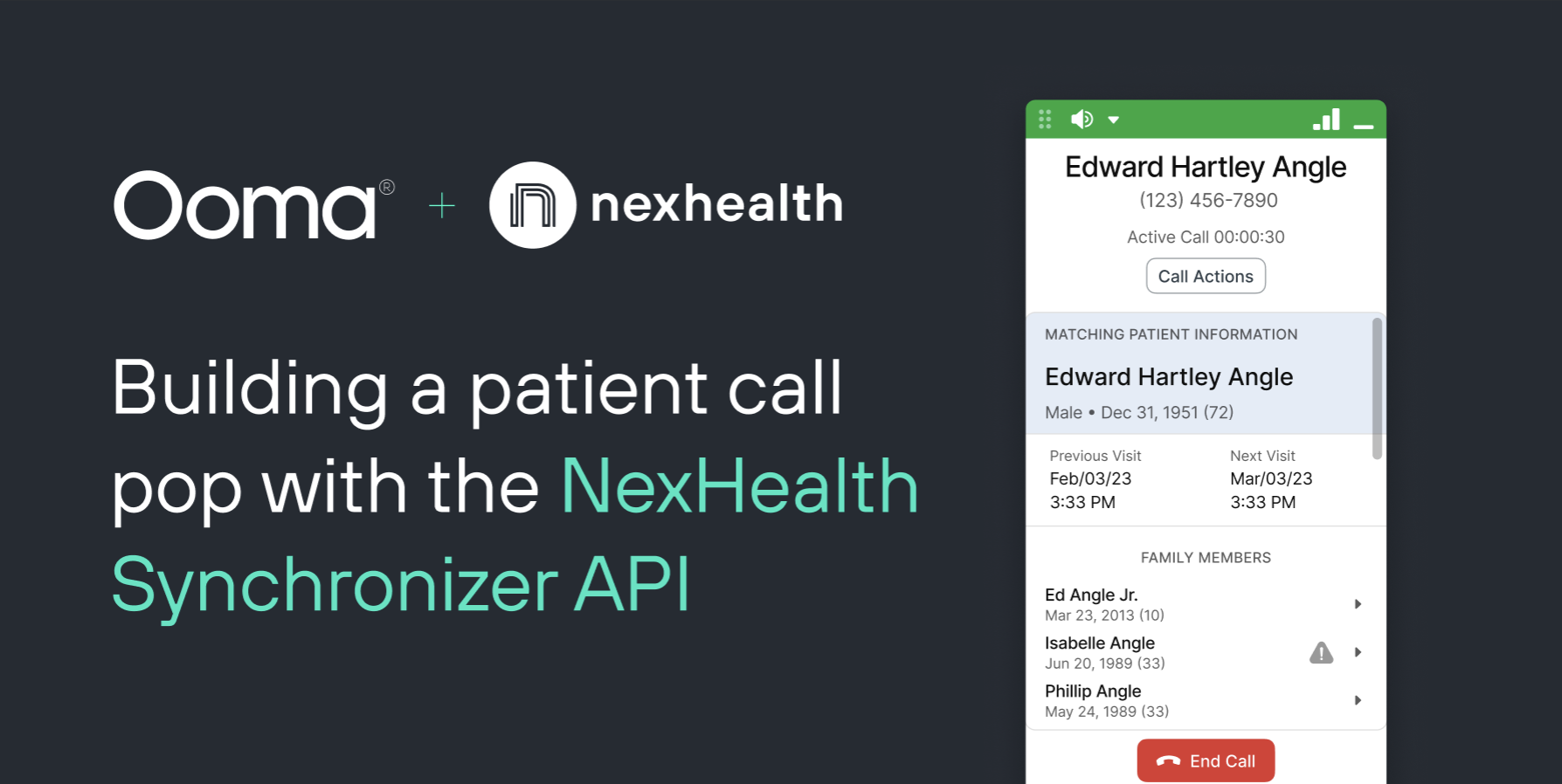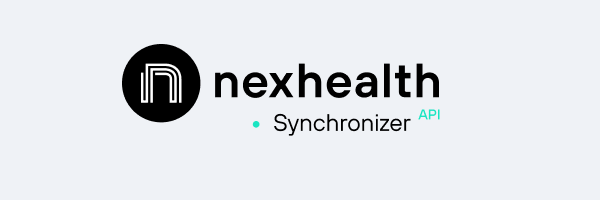June 2023 Release
This month, we’ve got the story of how Ooma (NYSE: OOMA) built a patient call pop in just five weeks using the NexHealth Synchronizer API. We’ve also included information about our upcoming Athenahealth beta, a new video about the origins of the Synchronizer, and details about our recent API rebrand.
Ooma selects the NexHealth Synchronizer API

Ooma, a leading business phone system, recently set out to build a Patient Caller-ID Pop that would let dental staff see patient data from their practice management system in real time when taking or making calls.
They launched this solution in just 5 weeks thanks to the Synchronizer API. Rather than building custom integrations for each of the many practice management systems used across their dental customer base, Ooma integrated once to the Synchronizer API. This lets them sync data such as the patient’s name, date of birth, previous and next visit dates, and related family members between numerous practice management systems and the Patient Caller-ID Pop.
Read the full story here.
Coming soon: Athenahealth beta
Next month, we’re reopening our Athenahealth beta program so developers can begin testing the enhancements we’ve made to the Synchronizer API’s bidirectional sync with one of the most widely-used medical EHRs. As part of the beta, you’ll be able to start syncing with Athenahealth via the same Synchronizer API endpoints that already support other medical EHRs like DrChrono and eClinicalWorks.
Here are just a few examples of what you can start building:
- Add real-time online scheduling to your app without requiring patients to log into a portal
- Read procedure codes to trigger customized appointment reminders and pre- or post-op instructions
- Sync patient details with other systems used by practice staff, such as CRM and marketing automation tools
Please reach out to us at [email protected] if you’d like to request early access.
New video: Why we built the Synchronizer
The #1 question we get from developers is “How do you sync with so many health record systems?” So we created a video to share the story of the NexHealth Synchronizer™.
Watch the video and let me know what you think!
The NexHealth API is now the Synchronizer API

In recognition of the Synchronizer’s importance to developers, we’re renaming the NexHealth API as the NexHealth Synchronizer API. The new name reflects the fact that developers who integrate to our API can use the Synchronizer to sync data bidirectionally with multiple health record systems.
This new name won’t change anything about how you make API requests. You’ll see the new name reflected throughout our website, documentation, and Postman collection.
Synchronizer API product updates

We’ve also made several updates to the Synchronizer to deliver even faster and more reliable syncs for key health record systems:
Dentrix Ascend
- We enabled a new way to sync missed and cancelled appointments. Now you can reliably use the
patient_missedandcancelledfields on the Appointments object to avoid sending reminders to patients who already missed or cancelled an appointment. - We also improved our ability to read providers, operatories, and locations. This ensures patients will see the right options for booking an appointment in your app.
- Appointment and form inserts are now more reliable, which will prevent double-bookings and minimize the need for staff to enter patient data manually to the health record system.
Dentrix Enterprise
- We added support for Dentrix Enterprise 11.04, so you can sync with the latest version of that software.
Dentrix
- We can now associate patients with insurance plans more reliably. By using the
include[]=insurance_coveragesquery parameter on the Patients object or making requests directly to/patients/{id}/insurance_coverages, you can identify patients’ insurance plans so you can send them specific notifications, surface availability with particular providers, and more. - It’s even easier to use the API to cancel appointments with a PATCH request. if the appointment has already been cancelled, deleted, or broken in the health record system, your request will return as a success rather than as an error that says the cancellation failed.
- We’ve improved the accuracy of form inserts by adding data verification before attempting to sync. This will protect against unintentionally populating patient records with the wrong allergies or medication alerts.